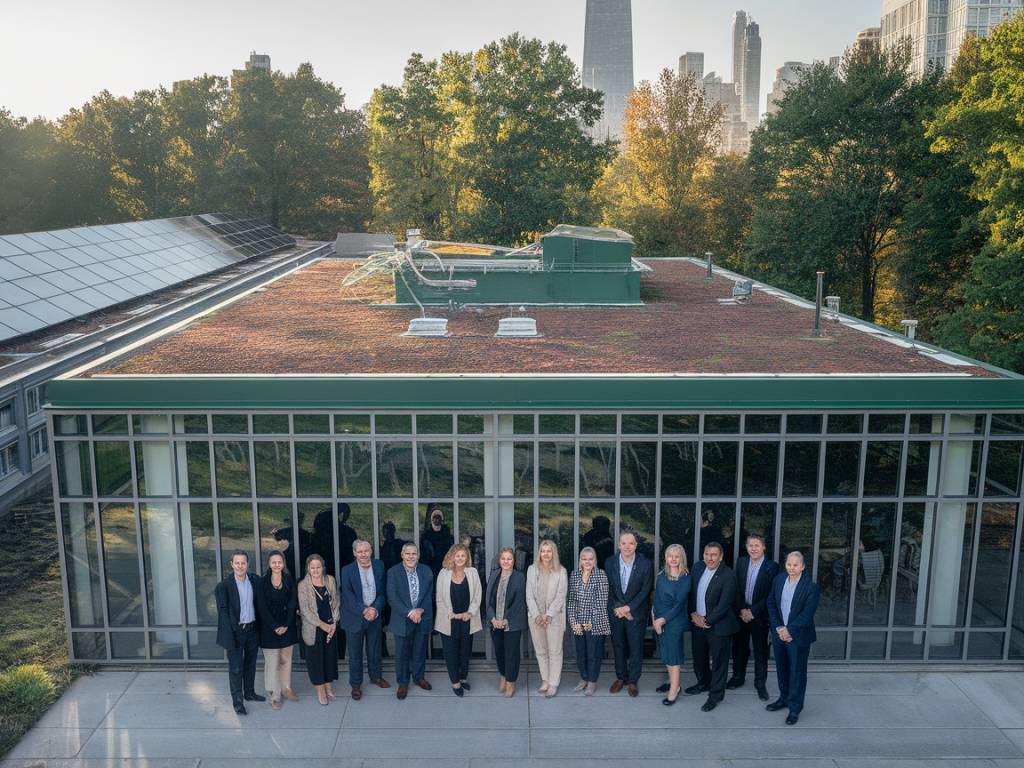The Rise of Vertical Farming in Urban Living
For urban dwellers craving a slice of nature within concrete walls, vertical farming is quickly emerging as more than a trend — it’s becoming a practical, sustainable solution. In compact apartments where space is at a premium, growing fresh herbs, microgreens, and even small vegetables isn’t just a dream—it’s increasingly doable, and impactful.
As global populations swarm to cities and climate change pressures mount on conventional agriculture, urban vertical farming is proving to be a critical piece of the sustainable living puzzle. But what does this mean for those of us living in small apartments with barely enough room for a yoga mat, let alone a garden?
Let’s unpack how vertical farming is quietly revolutionizing green urban living—one windowsill at a time.
What Is Vertical Farming, Really?
When many hear the term « vertical farming, » they picture high-tech towers and commercial crops grown with robotic precision. That’s accurate in industrial contexts. But at the home level, it can be as simple as a shelf-mounted hydroponic system or a wall-friendly planter filled with leafy greens.
At its core, vertical farming is about growing plants in stacked layers—maximizing space while minimizing resource consumption. It relies heavily on soilless farming methods like hydroponics, aeroponics, or aquaponics—each suited to different needs and space constraints.
For apartment dwellers, the beauty is in the flexibility. No balcony? No problem. Vertical systems can be mounted on kitchen walls, fitted near windows, or installed with grow lights to mimic natural sunlight.
Why It Makes Sense for City Living
Let’s talk about the elephant in the room: space. In urban centers where rent is sky-high, every square meter is precious. Unlike traditional gardening, vertical farming doesn’t ask for sprawling square footage. It asks for creativity and a vertical mindset.
But beyond space efficiency, here’s why vertical farming is becoming compatible with sustainable urban living:
- Year-round cultivation: With the right setup, you can grow produce regardless of season or weather.
- No soil, no mess: Hydroponic systems eliminate the need for heavy bags of potting soil and reduce pests.
- Water efficiency: Hydroponic systems can use up to 90% less water than traditional soil methods—a win for water-stressed cities.
- Shorter food chain: Eating what you grow means fewer emissions from transportation and packaging.
Small Investments, Big Returns
You don’t need an advanced engineering degree or a bank loan to get started. Many vertical farming kits are now designed specifically for beginners and renters. Think plug-and-play towers, modular shelves with integrated lighting, or even countertop units no larger than a toaster.
For under €100, you can start with a passive hydroponic system—essentially a reservoir, a wick, and some lightweight plant substrate. Herbs like basil, mint, or parsley thrive in these conditions. And the satisfaction of harvesting your own fresh ingredients? Priceless.
For tech enthusiasts, smart gardens with automated watering and LED grow lights offer a more hands-off approach. Some models even connect to your smartphone, giving you updates on your plants’ progress or nudging you when it’s time to add nutrients.
Real People, Real Stories
Take Emma, a graphic designer living in a 26m² studio in Berlin. With no direct sunlight and minimal room to spare, she installed a vertical hydroponic wall system in her kitchen. Today, she grows lettuce, spinach, and cilantro—enough to supply her weekly salads.
Or Jason, a university student in Paris, who shares a flat with two roommates. He built a DIY vertical garden using recycled PET bottles hung from a curtain rod. It’s not exactly haute couture, but it feeds them a steady stream of microgreens and starts plenty of conversations.
These examples show that it’s not about how much space you have, but how creatively you use it. In a world where ecological anxiety is constantly knocking at the door, these mini-oases offer a sense of agency and daily interaction with nature—even in the heart of a city.
Cultivating More Than Crops
Urban vertical farming is about food, yes—but it’s also about mindset. When you grow your own herbs or vegetables, even in small quantities, you become more attuned to seasonal cycles, plant biology, and food systems. The act of planting, tending, and harvesting reconnects us with the essentials.
Many urban growers report decreased stress and improved mental health. A study published in the Journal of Public Health found that indoor gardening activities can significantly lessen symptoms of anxiety and depression. Who knew a thicket of arugula could become your daily dose of zen?
Challenges—and Clever Workarounds
No urban solution is without hurdles, and vertical farming has its share. Light availability is a common barrier, especially in north-facing apartments. The fix? LED grow lights, now inexpensive and energy-efficient, duplicate sunlight spectra and are safe for indoor use.
Another challenge is temperature fluctuation. Plants aren’t huge fans of radiator heat or icy drafts. Luckily, insulating your grow space with reflective materials or simply positioning systems away from vents does the trick.
And yes, hydroponic systems require occasional maintenance—cleaning reservoirs and checking nutrient levels. But a fifteen-minute weekly routine is a small price to pay for harvests measured in handfuls, not miles.
What Are the Environmental Stakes?
At scale, vertical farming has the potential to make urban areas more self-reliant in food production. While small apartment setups won’t entirely replace grocery runs, collectively, they reduce urban demand on rural agriculture. That’s fewer trucks on the road, less land converted to monoculture, and lower food waste overall.
Moreover, home-growing practices increase awareness of sustainable food systems. When individuals understand the effort and energy behind every tomato or basil leaf, food appreciation—and food conservation—skyrockets.
Think of it as creating distributed micro-farms dotted across the cityscape, each contributing its modest share to a greener ecosystem.
Getting Started: Practical Tips
Ready to bring the farm indoors? Here’s a checklist to guide your first steps:
- Assess light: South-facing windows are optimal, but if natural light is minimal, invest in an LED grow light (aim for full-spectrum).
- Start small: Microgreens like radish, mustard, or broccoli grow quickly and require minimal setup.
- Choose the right system: Passive hydroponics are low-tech and reliable. For more automation, consider smart garden kits with built-in sensors.
- Monitor temperature and humidity: Avoid placing your garden near heaters or drafty windows. Ideal indoor growing temp: 18–24°C.
- Commit to a routine: Set reminders for checking water and nutrients—it’s less effort than you think.
Even if you harvest only a handful of herbs each week, you’re participating in something much larger: a reimagining of how urban communities can live more sustainably—even ten floors above the ground.
A Greener Future, Grown Indoors
Our cities are growing upward. It only makes sense that our food systems do too. Vertical farming in small apartments isn’t just about maximizing space—it’s about minimizing ecological footprints, boosting food security, and nurturing the human-nature connection often lost in urban life.
Whether you’re a minimalist in a microunit or a plant-loving maximalist with a jungle-style living room, there’s a vertical farming method that fits your home and your lifestyle. And in doing so, you plant more than just seeds—you plant possibilities.
At a time when our global food system wobbles under the weight of climate change, resource depletion, and urbanization, every green wall, windowsill herb box, or LED-lit salad tower is part of a broader solution.
So, the next time you look at that empty wall in your kitchen, ask yourself: could this be your gateway to greener living?



